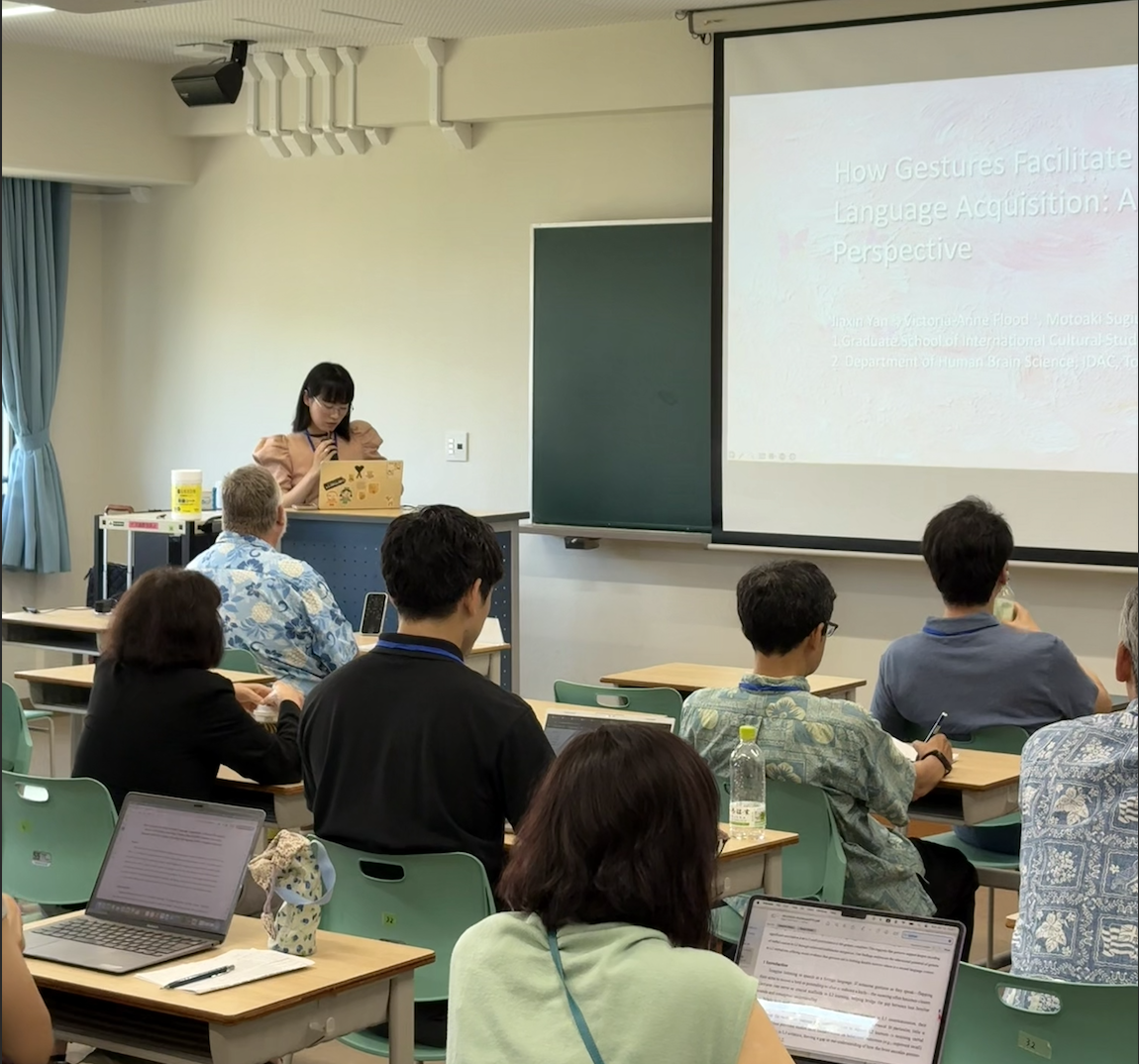How Gestures Facilitate Second Language Acquisition: A Neural Perspective (International Oral Presentation)
People use gestures all the time — they’re such a natural yet essential part of our communication. While the study of co-speech gestures in our native language began long ago, attention to their role in second language (L2) acquisition and comprehension started much later. Although recent behavioral studies have shown that gestures serve as visual cues and leave motor traces in the listener’s mind — helping them understand and remember spoken content — the neural mechanisms behind this integration in L2 contexts remain largely unexplored.
This time, we had a chance to bring our team’s fMRI findings on this very topic to the stage. We discovered that recall of L2 speech is positively correlated with activation in the left posterior middle temporal gyrus (pMTG) — a known multimodal integration hub in the brain! Many audience members with interests in multimodal communication, in both L1 and L2, came to discuss the work enthusiastically after the talk. We truly appreciated the insightful conversations.

Jiaxin Yan, Victoria-Anne Flood, Motoaki Sugiura, & Hyeonjeong Jeong
How Gestures Facilitate Second Language Acquisition: A Neural Perspective
The Japanese Society for Language Sciences (JSLS), Matsuyama, Ehime University, Japan【 Oral 】
https://jslsweb.sakura.ne.jp/wp/?page_id=1678&lang=en

